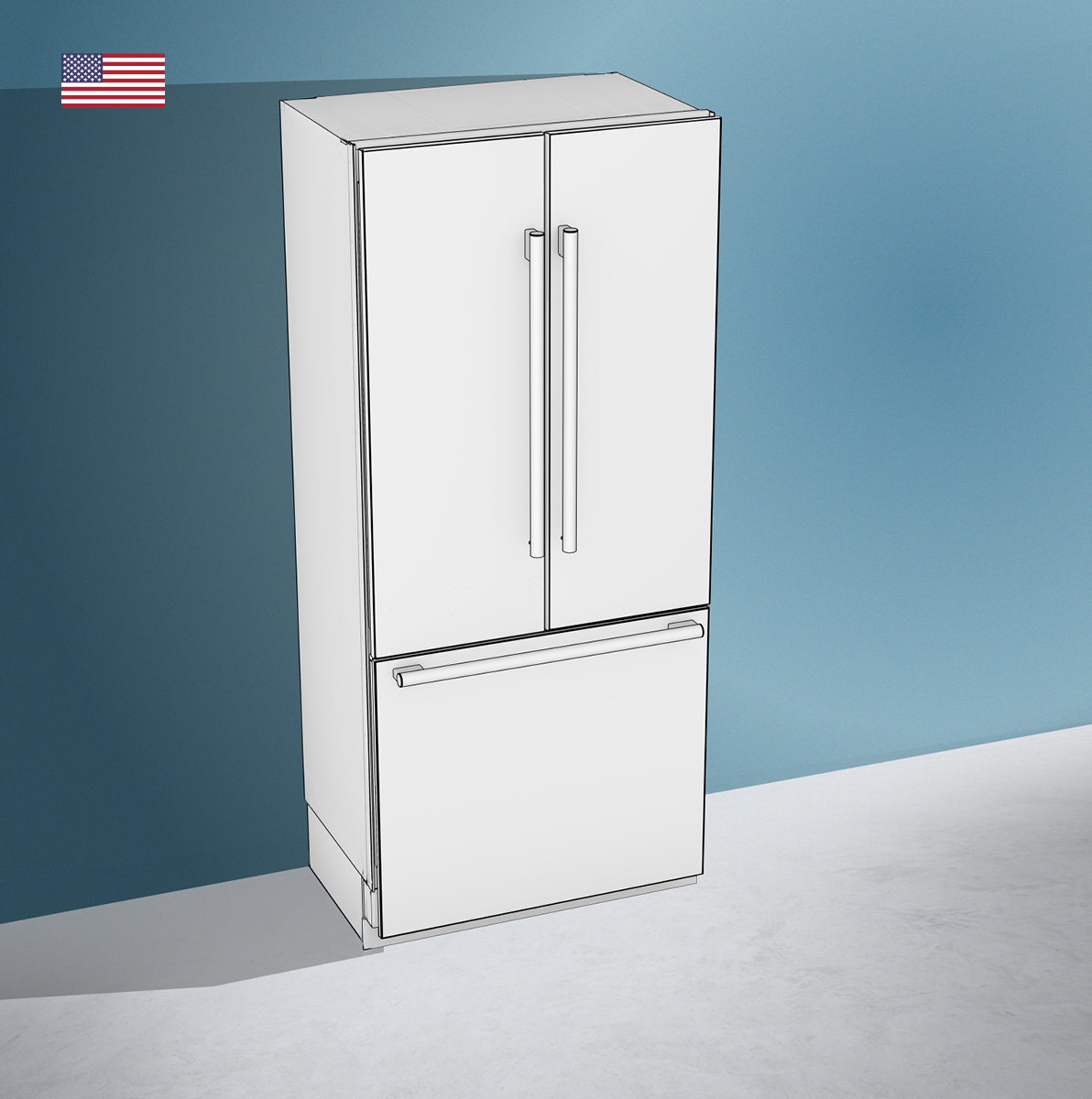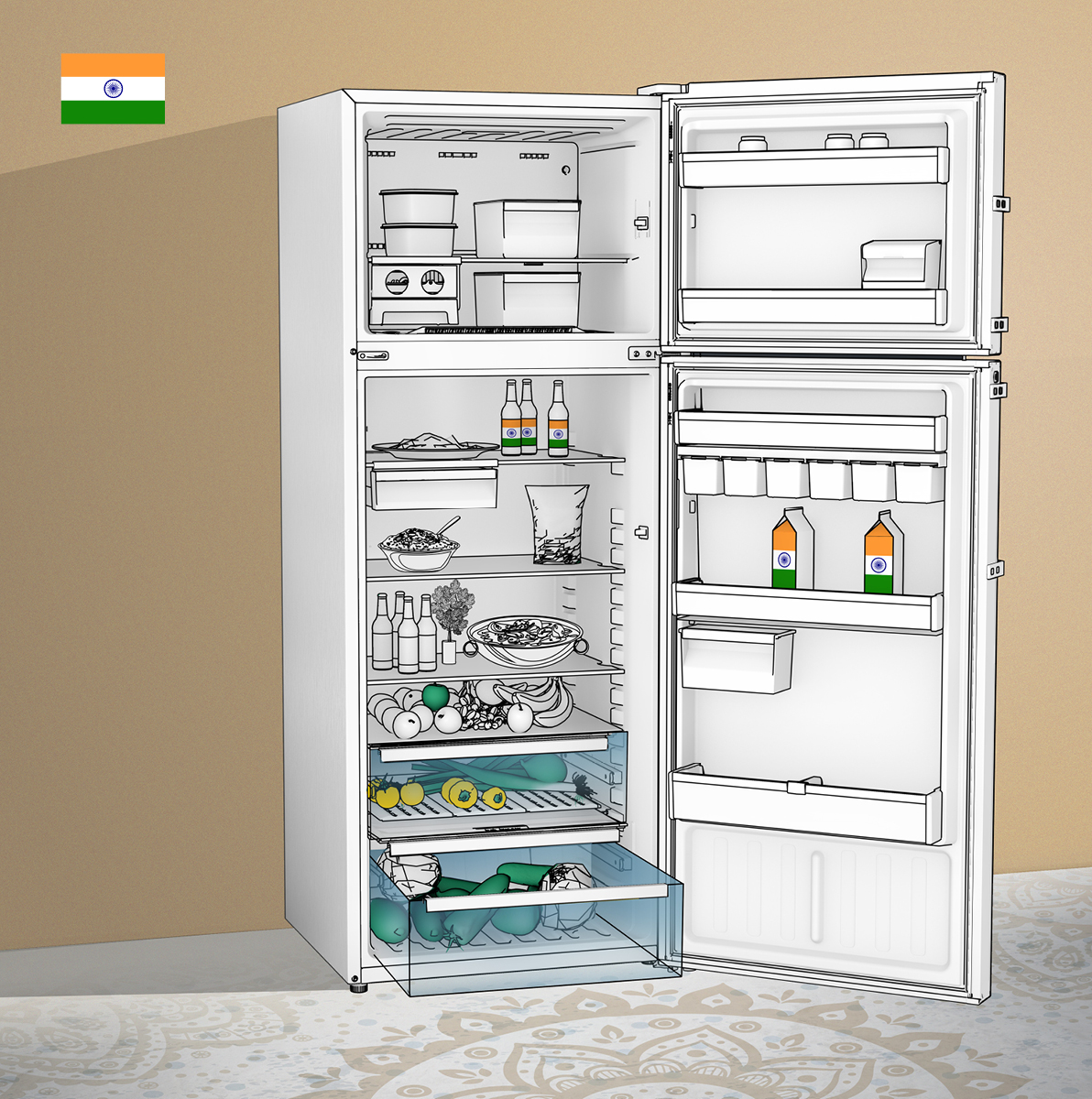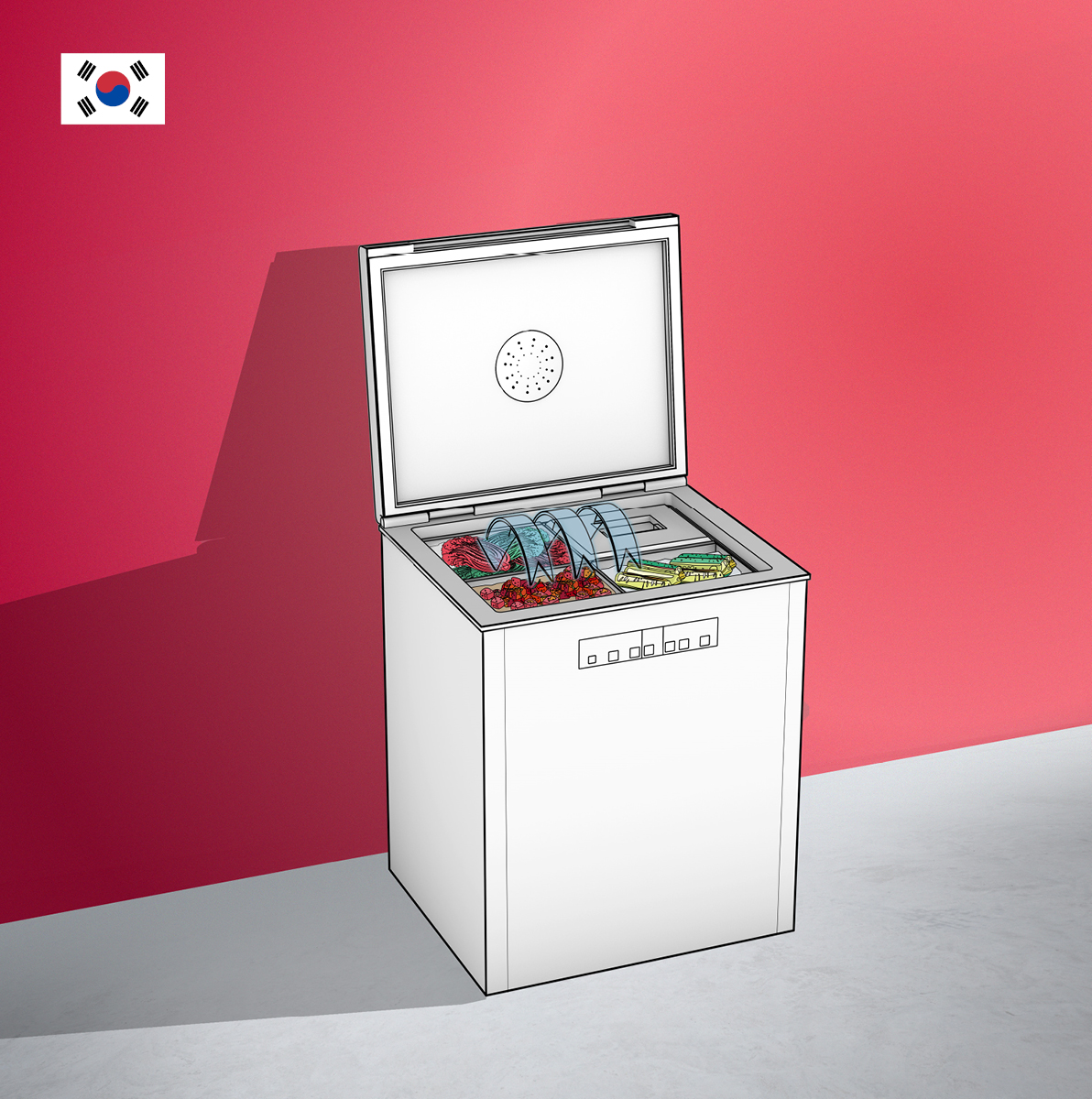
5 minutes reading time
A journey through the world’s refrigerators
Different countries, different customs – eating habits are a very peculiar matter. They vary from culture to culture, country to country. The need for appropriate means of refrigeration goes hand in hand with special preferences regarding food. A journey through the refrigerators of this world gives us insights into the peculiarities of other cultures. Please note: Our list is only a brief insight and is by no means universal.


1st stop: USA
The land of unlimited... ice cubes! For Americans, the most important thing about the refrigerator is the ice cube dispenser. According to a survey, 51 percent of Americans consume up to 116 glasses of ice-cold beverages per year. This corresponds to approximately 180 kilograms of ice cubes. And it is not just any ice cubes that can be used, the texture and taste must be right. The following principle applies: The more ice cubes, the better.
But where does America's love for ice cubes stem from? Very simply: A shrewd businessman, who sold blocks of ice for cooling food in the Caribbean, wanted to make more of a profit. Therefore, he recommended his customers to also cool their beverages this way. The trend spread to America, where the people were glad of a little cooling down in the hot summer months. And so the special preference ran its course.


2nd stop: India
India is famous around the world for its colourful curries, striking Bollywood films, the Holi Festival of Colours, various spices and much more. But most are not aware that in India, people attach great importance to unusually colourful, floral refrigerator designs. Beautiful door patterns are much more popular in India than, for example, in Germany.
But this is not the only special feature that characterises the refrigerator market in India. Between 23 and 37 percent of Indians are vegetarians, this figure rises to 49 percent in towns and cities such as Indore in Central India. Vegetarian or not – Indian cuisine includes lots of fresh fruit and vegetables. With the humid climate in India, characterised by temperatures up to 50°C in the summer and high humidity, it is better to store fruit and vegetables in the refrigerator. Particularly large vegetable compartments are required in order to keep the food fresh for an optimal length of time.


3rd stop: France
Vive la France and… wine cabinets on the balcony? Yes, you read that correctly. In France, people like to position the wine cabinet on the balcony. This saves space in the apartment and even more importantly: The wine is ready to be consumed immediately and does not have to be fetched from the cellar. This type of storage is quite worth it for the most popular alcoholic beverage of the French, because even though more wine is consumed in the US than in France, the average French person consumes almost 41 litres of wine per year. Red wine is still the firm favourite.
At the same time, the practical wine storage on the balcony also means that the wine does not have to be chilled in the winter, but heated. Of course, the perfect drinking temperature depends on the type of wine, but is generally between 8 to 14°C for white wine and 12 to 18°C for red wine. However, the average outdoor temperature in France is 5.4°C in winter. The wine cabinet must compensate for these temperature differences outdoors.


4th stop: Brazil
How cold do you drink your beer? The average drinking temperature of beer in Germany is 6 to 8°C, i.e. cellar temperature. Many types of beer are of course consumed at a warmer or cooler temperature, but not as cold as the Brazilians drink their beer. It must be ice cold, literally! Therefore, Brazilian beer lovers require very efficient refrigerators so that the beer is "estupidamente gelada" (Portuguese for "freezing cold"). Incidentally, Brazilians mostly drink Pilsner.
Beer does not freeze as quickly as water as it generally has an alcohol content of 4 to 5%. Therefore, the freezing point of these beers is below 0°C. They are stored at around -2°C. A large number of beer drinkers love it when fine ice crystals form in the prechilled glass when pouring the beer. But there is not much leeway with the strong preference of Brazilians for cold beer, which can lead to impractical situations. If the beer is too cold, the beverage in the bottle is still liquid thanks to the excess pressure. However, as soon as the bottle is opened, the beer freezes and is no longer drinkable.


5th stop: South Korea
Can you stand the heat? Kimchi (김치) is a Korean side dish. Similar to the classic German dish 'Sauerkraut', Kimchi is fermented before it is eaten. The main ingredients are Chinese cabbage, spring onions, ginger, garlic and hot red chilli powder. The longer Kimchi is fermented, the more sour it becomes – depending on the preparation method, this can be the desired effect or not.
In the past, Kimchi was only prepared in autumn and stored in traditional brown ceramic pots, which were buried in the cold ground so you could also enjoy it in the summer. Nowadays, it’s done differently: In order to be able to optimally control the fermentation process, there are now special Kimchi refrigerators in South Korea. These appliances control the temperature curves for an optimal fermentation process and keep the storage temperature constant at 4°C. This way, Kimchi stays fresh for longer.
In 2019, 1.3 million Kimchi refrigerators were sold, a trend that has constant over the last few years. It is estimated that one in five South Koreans has their own Kimchi refrigerator at home.



